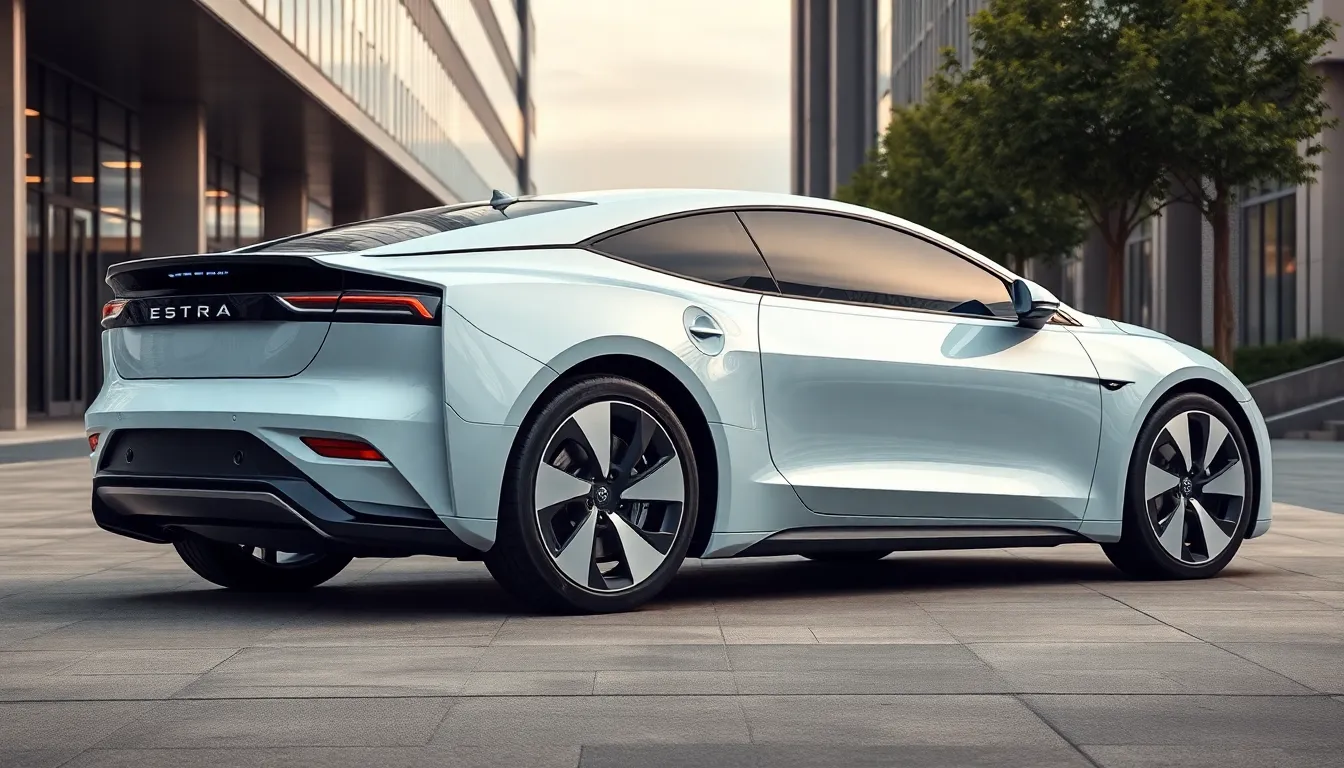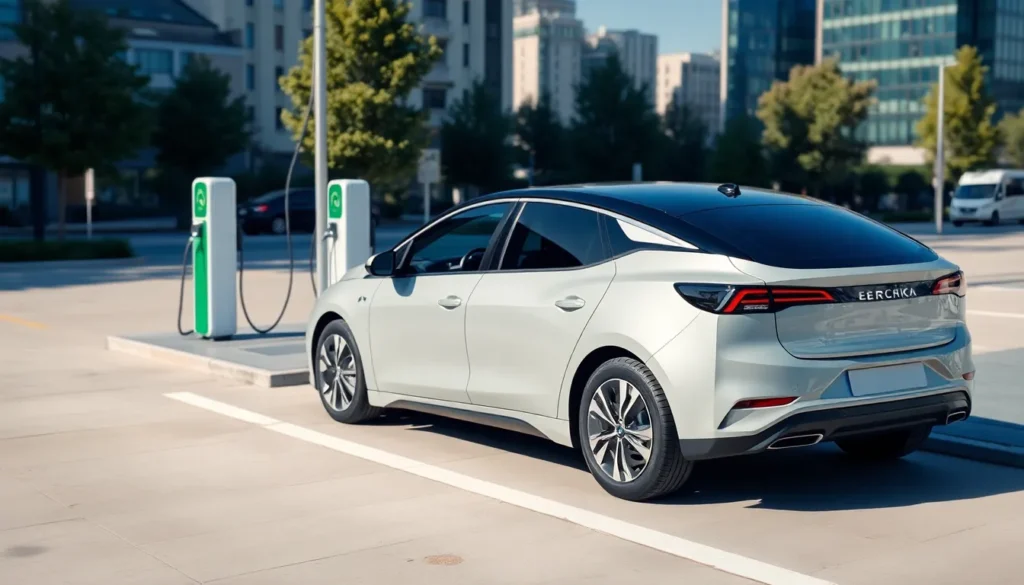Electric vehicles are revolutionizing the way we think about driving, but there’s one burning question that keeps popping up: do they even have transmissions? Picture this: a sleek, silent car zooming past, and you wonder if it’s secretly hiding a complex gearbox under its hood. Spoiler alert: it’s not!
Table of Contents
ToggleOverview of Electric Vehicles
Electric vehicles (EVs) offer a unique driving experience compared to traditional gasoline-powered vehicles. They operate on electric motors powered by batteries, which eliminates the need for complex mechanical components. Conventional cars rely on multi-speed transmissions to manage engine power; however, EVs utilize a simpler approach.
Simplicity defines the transmission system in EVs. Many models feature a single-speed transmission, allowing for direct power transfer from the electric motor to the wheels. This design enhances efficiency and reduces maintenance compared to traditional vehicles, which require regular servicing for gearboxes.
Torque delivery in electric motors occurs instantly, providing quick acceleration without the need for gear changes. Many drivers appreciate the smoothness and responsiveness of this driving experience. Enhanced performance characteristics stem from the absence of shifting, allowing for uninterrupted power delivery.
Multiple manufacturers, including Tesla and Nissan, produce EVs with varying designs. Each model may differ in specifics, but the fundamental principle remains the same. Understanding this technology reveals why several drivers prefer the straightforward mechanics of electric over conventional gasoline vehicles.
Market trends indicate a growing shift towards electric. More consumers recognize the benefits associated with EV ownership, such as lower emissions and decreased fuel costs. As technology evolves, innovations in battery and motor design continue to drive interest in electric vehicles, solidifying their place in the automotive industry.
Understanding Transmissions

Electric vehicles (EVs) don’t use traditional transmissions. Instead, they rely on a simpler system that enhances performance and efficiency.
What Is a Transmission?
A transmission transfers power from the engine to the wheels in conventional vehicles. Traditional systems adapt engine output for different speeds and torque levels. They use multiple gears to accommodate various driving conditions. In contrast, electric vehicles employ a single-speed transmission, which eliminates the need for shifting gears. This design simplifies the overall architecture and improves reliability.
Types of Transmissions in Traditional Vehicles
Traditional vehicles typically use two main types of transmissions: automatic and manual. Automatic transmissions shift gears on their own, optimizing performance based on speed and driving conditions. Manual transmissions require driver input to change gears, offering a more engaging driving experience. Additionally, some vehicles feature continuously variable transmissions (CVTs), which provide seamless acceleration without distinct gear shifts. These types support varied driving experiences while increasing fuel efficiency, in contrast to the straightforward mechanism of electric vehicles.
Do Electric Vehicles Have Transmissions?
Electric vehicles (EVs) do not incorporate traditional transmissions found in gasoline vehicles. They utilize a simpler approach with electric motors that allow seamless acceleration.
The Role of Electric Motors
Electric motors serve as the primary source of power in EVs. They deliver instant torque, which enables quick acceleration without the need for gear shifts. This immediate power output results in a smooth driving experience. Various EV models leverage this technology, which minimizes mechanical complexity while enhancing performance. The simplicity of electric motors reduces the likelihood of mechanical failures, thereby decreasing maintenance costs significantly.
Differences Between Electric and Gasoline Vehicles
Electric and gasoline vehicles differ fundamentally in their powertrains. Gasoline vehicles use complex multi-speed transmissions to manage varying speeds and torque levels. In contrast, electric vehicles operate on single-speed transmissions that provide a direct connection between the motor and wheels. This design eliminates the need for gear changes, resulting in a more efficient energy transfer. Fuel costs also tend to be lower for EVs due to their energy-efficient nature. Additionally, the emissions produced by electric vehicles are considerably reduced, aligning with sustainable driving practices.
Advantages of Electric Vehicle Drivetrains
Electric vehicles (EVs) offer several advantages due to their unique drivetrains. Simplified mechanisms constitute one significant benefit, as EVs operate with a single-speed transmission that reduces the complexity found in traditional multi-speed systems. Enhanced efficiency results from this design, which allows direct power transfer from the electric motor to the wheels.
Instant torque delivery stands out as another advantage of electric drivetrains. Smooth acceleration occurs without the delays associated with gear changes, providing a seamless driving experience. Many drivers appreciate this responsiveness, as it delivers quick and enjoyable acceleration.
Maintenance requirements decrease significantly with electric vehicles. Without the need for traditional gearboxes, regular servicing becomes less necessary. Reduced wear and tear on components further contribute to lower overall ownership costs.
Environmental impact also plays a vital role in favoring electric drivetrains. Lower emissions align with sustainable driving practices, making EVs an appealing choice for environmentally-conscious consumers. Fewer greenhouse gases released into the atmosphere enhance the appeal of electric vehicles.
Market trends, driven by innovations in battery technology, continue promoting the benefits of EVs. Manufacturers, including Tesla and Nissan, focus on expanding their electric vehicle offerings, ensuring diverse options for consumers. This growing investment strengthens the position of electric vehicles within the automotive industry.
The advantages of electric vehicle drivetrains include simplified mechanics, instant torque delivery, reduced maintenance, and a positive environmental impact. Continued advancements in electric vehicle technology enhance their appeal, as consumers seek efficient and sustainable transportation solutions.
Electric vehicles represent a significant shift in automotive technology with their simplified mechanics and efficient performance. The absence of traditional transmissions allows for a direct connection between the electric motor and the wheels, enhancing energy transfer and driving experience. This design not only provides instant torque for quick acceleration but also reduces maintenance needs, making EVs a cost-effective choice for many drivers. As the market continues to evolve with advancements in battery and motor technologies, electric vehicles are poised to play an increasingly vital role in sustainable transportation. Their appeal lies in their efficiency, lower emissions, and the promise of a more enjoyable driving experience.






